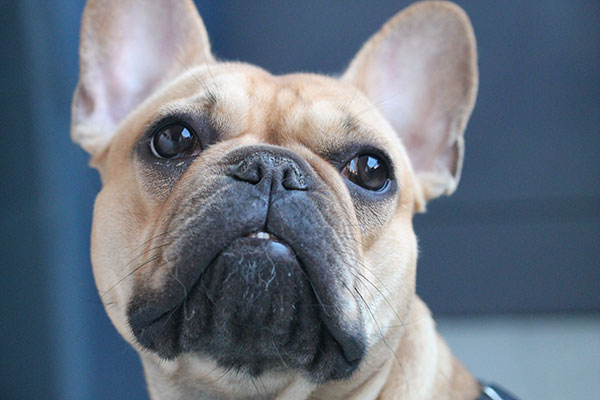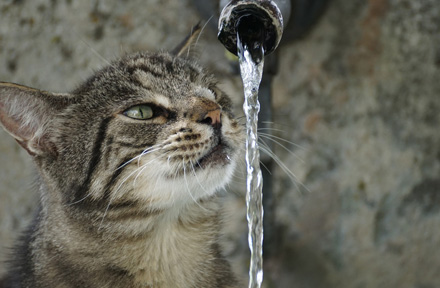Feb 27, 2023
Author:Lisa Martinez
Dogs are the best - they're always there for a cuddle, never judge you, and make the best partners in crime. But did you know that dogs also communicate through body language? And because of this trait, learning what each dog body language movement means can be tricky, but once you do, you can better understand and connect with your furry friend. In this post, we'll go over the basics of reading your dog's body language and what each gesture means. By understanding your dog better, you'll better understand when they're happy, anxious, or in danger!
Dogs can't tell us when they're sick or hurt, so we must learn how to read their body language. In this blog post, we'll go over how to read dog body language and interpret their behavior. So keep reading to learn more!
A wagging tail indicates that your dog is happy and relaxed. However, the speed and intensity of the wag can give you more information about how they're feeling. A slow, gentle wag usually indicates contentment, while a more vigorous wag may signal excitement or anxiety. If your dog's tail is held high and stiff, it may mean aggression. And if their tail is tucked between their legs, they may feel scared or submissive.

When your dog licks its nose and lip, it could be simply trying to remove a substance that it doesn't like the taste of. Dogs will sometimes lick their noses to show deference to a higher-ranking dog or seek forgiveness after committing an act that they know is against the rules. If your dog licks its nose and lip excessively, it might be worth taking it to the vet to rule out any health issues.

While we might see yawning as a sign of fatigue, it can actually have a range of different meanings for dogs. Dogs often yawn when they are anxious or stressed - it's their way of calming themselves down. Yawning can also signify submission, such as when your dog greets you with a big yawn after being away from you. In some cases, dog owners report that their pets will yawn when they want something, such as food or attention.
Dogs often close their mouths while feeling uncomfortable or threatened to protect their teeth and jaw from injury. Your dog may also try to make itself appear smaller and less threatening. This body language is often seen in dogs experiencing fear or stress. If you see your dog tightly closing its mouth, try to identify the source of the stress and help your dog to feel more comfortable.

As we said, dogs communicate through their body language, and licking is one way they show stress or anxiety. If your dog starts licking its paws more frequently or intensely, pay attention to other cues to see if there might be an underlying cause. For example, excessive licking could be accompanied by restless pacing, panting, or hiding. Also, this body language of dogs could be a response to a new environment or routine, such as a change in housemates. Talk to your veterinarian if you're unsure what's causing your dog's stress. They can help you rule out any medical causes and suggest ways to help your dog feel more relaxed.
Dogs are highly expressive creatures, and their body language can tell us a lot about their feelings. For example, if a dog avoids eye contact, it's usually an indication that they feel guilty or ashamed about something. This is often the case when a dog has done something they know they're not supposed to - like stealing a sock from the laundry basket. Conversely, a dog may avoid eye contact if feeling anxious or overwhelmed. If you notice your dog averting its gaze more than usual, it's a good idea to take them for a calm walk or play session to help them relax.
Many dog owners are familiar with their dog's basic signals to communicate, such as wagging its tail or barking. However, dog body language is much more complex than that, and even the smallest changes in posture can indicate a dog's mood or intentions. A typical body language cue is when a dog pulls its ears flat against its head, which can happen if your buddy is anxious and is trying to make itself appear less threatening. Sometimes, it also signifies the dog preparing to fight or defend itself. When you see this dog body language gesture, pay attention to the other cues it is giving off, such as its body posture and the look in its eyes.

If your dog has a curled lip and exposed teeth, it usually means they're feeling aggressive or defensive. This body language sign is often accompanied by growling or barking. It's important to interpret this sign correctly, as it can be a warning that your dog is about to bite. If you see this sign, it's best to back off and give your dog some space. Dogs will also sometimes show their teeth when playing or feeling happy. This is often accompanied by a relaxed body posture and tail wagging. If you see your dog behaving this way, there's no need to worry - they're enjoying themselves!
One of the most common ways dogs communicate is through body language. By understanding how to read your dog's body language, dog owners can gain insights into what their dogs think and feel. One of the most crucial body language cues to watch is raised hackles. Hackles are the long hairs that run along a dog's neck and back. When a dog's hackles are raised, it can mean a sense of stress, arousal, or aggression.
Cowering is when a dog lowers its body and tucks its tail between its legs, indicating submission or fear. It's important to take note of your dog's other body language cues to better understand what they're trying to communicate. For example, if your dog is cowering and has its ears back and lips pulled back in a snarl, this is a sign of aggression. However, if your dog is cowering and has its tail wagging, this may be a sign that it's happy or excited. You can better understand your dog's emotional state and needs by learning how to read its body language.
Dogs don't sweat through their skin as humans do, so exposing their bellies helps regulate their body temperature. Another possibility is that exposing their skin can mean submission. By exposing their vulnerable underbelly, dogs show that they're not a threat and are open to being approached.
Of course, not all dogs roll over and expose their belly when they're happy and relaxed. Sometimes, this behavior can be a sign of anxiety or stress. If your dog suddenly starts exposing their belly more frequently, it may be worth considering whether there are any changes in its environment that could be causing them distress. For example, if you've recently moved house or started a new job, your dog may pick up your stress levels and react accordingly.
While a dog's drool might just seem like slobber to us, it can be quite informative. If your dog is drooling more than usual, it could mean they're nervous or anxious. Dogs typically produce more saliva when they're excited or stressed, so if you notice your dog drooling more than normal, it's important to look closely at their body language. Are their ears lowered, or are they averting their gaze? These can be signs that your dog is feeling uncomfortable or even threatened. If you're unsure what your dog's drool means, the best way to find out is to ask your veterinarian.

If your dog lifts its paw and then puts it down again, they're likely asking for attention. This is especially true if they do it while you're petting them or if they start to get restless when you stop. On the other hand, if your dog lifts its paw and holds it in the air, it might feel uneasy or even threatened. This is often seen when there's a loud noise or someone new in the house. If you see your dog doing this, it's best to remove them from the situation and let them calm down in a quiet place.
If your dog leans its body forward, it usually means that it is interested in something and wants to get closer to it. Leanings also often occur when dogs seek attention from their owners. If your dog starts leaning on you, it may ask for a belly rub or some other form of affection. However, it's important to pay attention to the context in which the leaning occurs.

If your dog is squinting or blinking a lot, it could be a sign that they're feeling stressed or uncomfortable. It's important to take note of your dog's other body language cues to understand why they might feel this way. For example, if they're also panting heavily or pacing back and forth, it could signify anxiety.
Popular Post

What to Feed a Sick Dog With No Appetite? [2025 Guide]
May 16, 2023

Troubleshooting Common Issues with Automatic Pet Feeders: Tips & Tricks for Pet Owners
Oct 26, 2023

Why Does My Cat Cough After Drinking Water? 8 Potential Reasons
Mar 13, 2023

Why is My Cat Throwing up Water? Top 5 Causes Here
Feb 08, 2023

My Cat Only Eats A Little at A Time - What to Do?
Feb 27, 2023
$99.99
$129.99
Copyright © 2025 WOPET. All Rights Reserved.